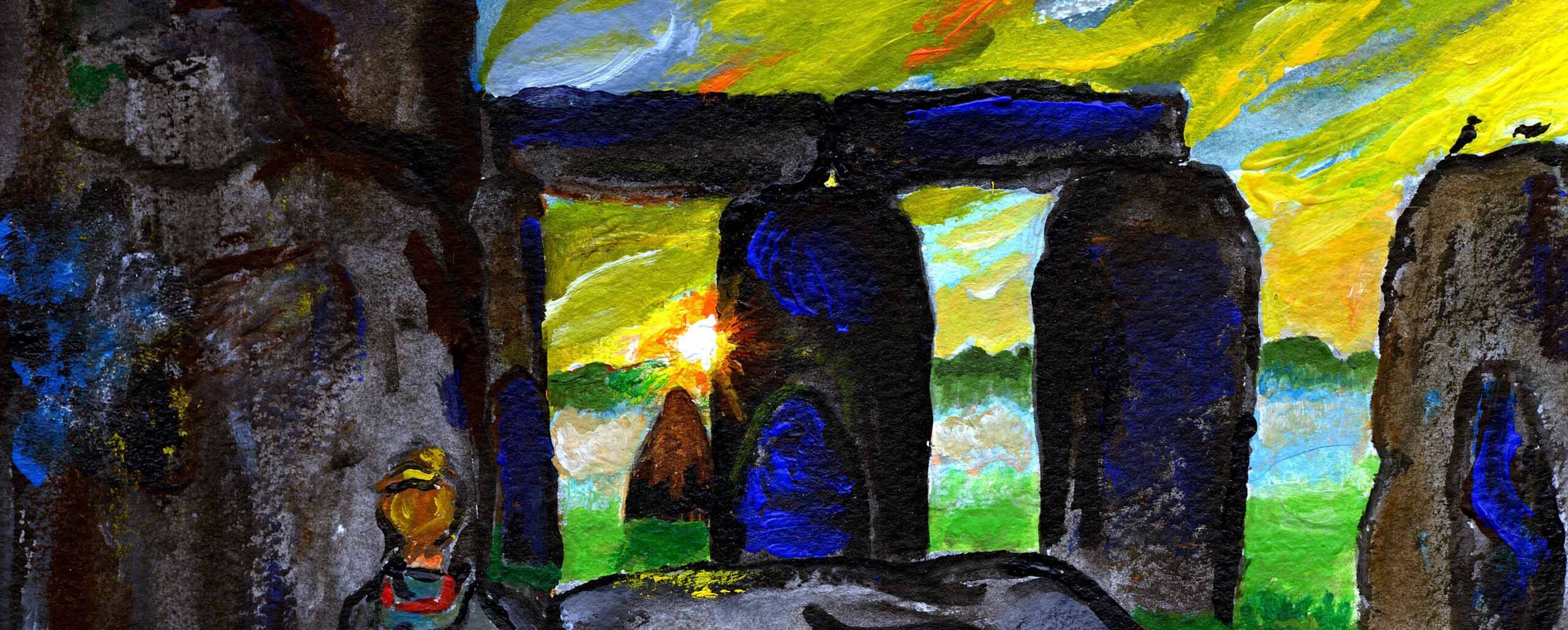On Tuesday Oct. 25, the Moon as it passes through its new position will be fairly close north of the Sun, so that the southern part of its shadow – nearly half of it – will fall across a northern part of the Earth: Europe, Asia, and part of Africa, as shown in this detail from an illustration in Astronomical Calendar 2022.

See the end note about enlarging illustrations.
A dark brown needle represents the Moon’s umbra or total shadow; dashed lines are the sides of its continuation, the antumbra, from within which a ring eclipse would be seen, but which just misses Earth; clusters of lines are the sides of the far broader penumbra or partial shadow; and curves on the Earth’s surface are the boundaries of the penumbra’s footprints at the Universal Times marked.
Britain will see, from shortly after 9 AM to shortly before 11, a bite that is taken out of the northern side of the Sun and grows large in the middle of this time. It is the Moon, which looks like part of the blue sky; the sky will darken somewhat, but not become night-like as in a total eclipse.
__________
ILLUSTRATIONS in these posts are made with precision but have to be inserted in another format. You may be able to enlarge them on your monitor. One way: right-click, and choose “View image” or “Open image in new tab”, then enlarge. Or choose “Copy image”, then put it on your desktop, then open it. On an iPad or phone, use the finger gesture that enlarges (spreading with two fingers, or tapping and dragging with three fingers). Other methods have been suggested, such as dragging the image to the desktop and opening it in other ways.
Sometimes I make improvements or corrections to a post after publishing it. If you click on the title, rather than on ‘Read more’, I think you are sure to see the latest version. Or you can click ‘Refresh’ to get the latest version.
This weblog maintains its right to be about astronomy or anything under the sun.

Skies were reasonable for (appropriately) part of the partial solar eclipse here in NE England today, starting out (of course!) partly clear with some hazy cirrus by first light. About half an hour before the eclipse was due to start (which was to be 09:04 UT for my location), I made a first solar projection, to check the telescope screen was OK and adjust the focus, and was pleasantly surprised to find a couple of small sunspots were visible, one each towards the receding and approaching limb of the Sun.
Unfortunately, a cloud bank spread over the Sun shortly after this, which cleared enough for another look only around 09:30, by when the eclipse was well underway. However, the sky stayed free from heavier clouds, with only some variable hazy cirrus across the Sun, for nearly an hour after that, which was conveniently right across the time of maximum eclipse, approaching 25% of the disc, at 09:57 UT.
As the eclipse progressed, it was clear the approaching limb sunspot was itself going to be eclipsed, and sure enough it disappeared from view behind the Moon around 10:10. Since heavy clouds came-up again over the Sun soon after 10:20 though, it wasn’t possible to see the spot’s re-emergence, given the Sun didn’t reappear until almost 12:30, by when the eclipse was over. However, an entertaining event in all, with the relatively deepest part of the whole event seen very nicely.
Hope others elsewhere had at least similar, or better, good fortune!